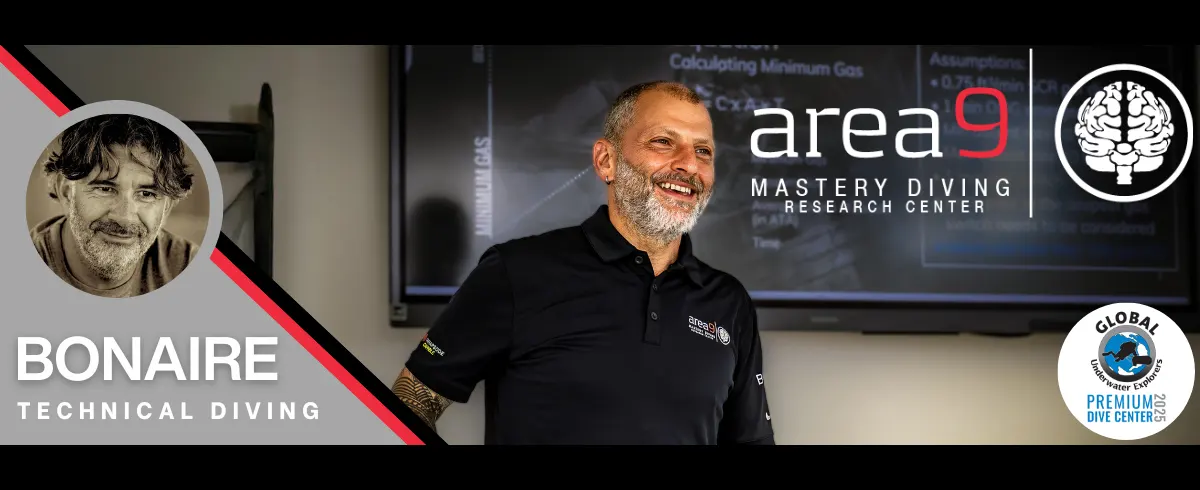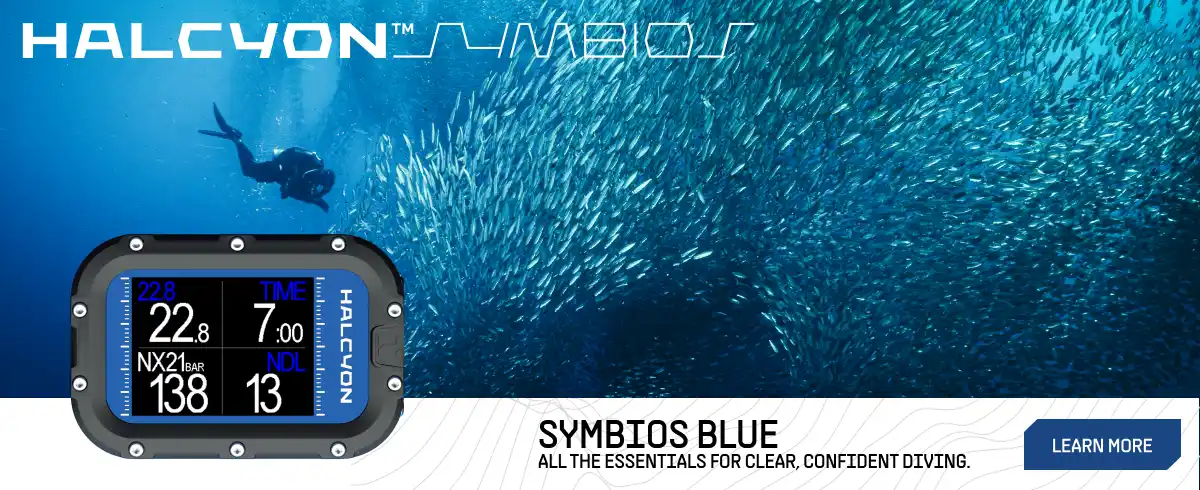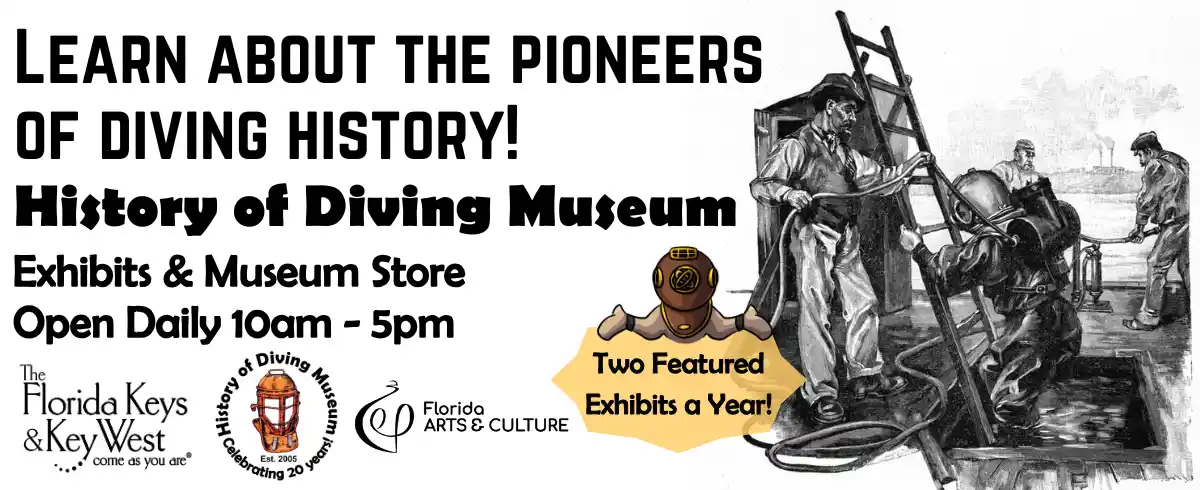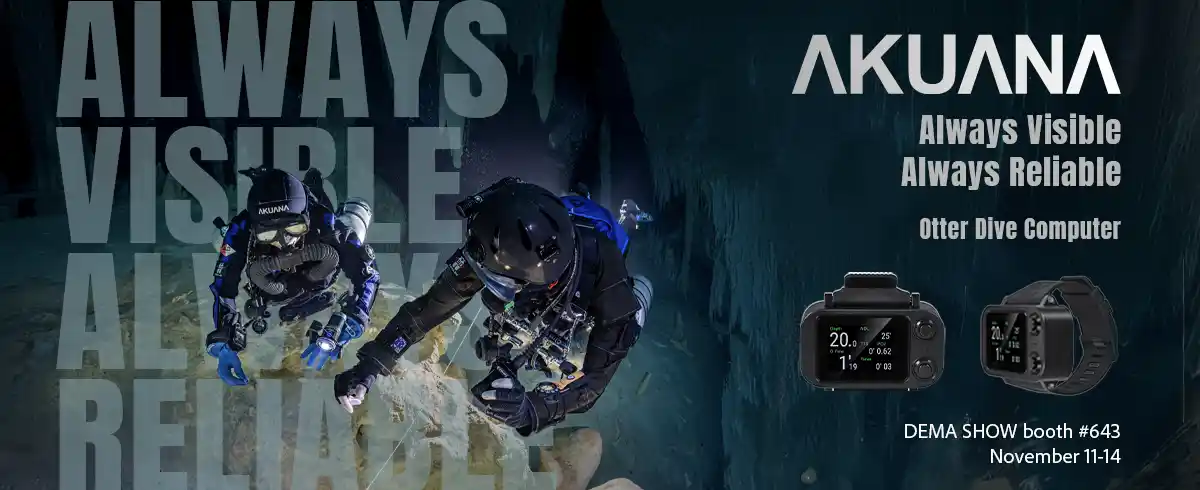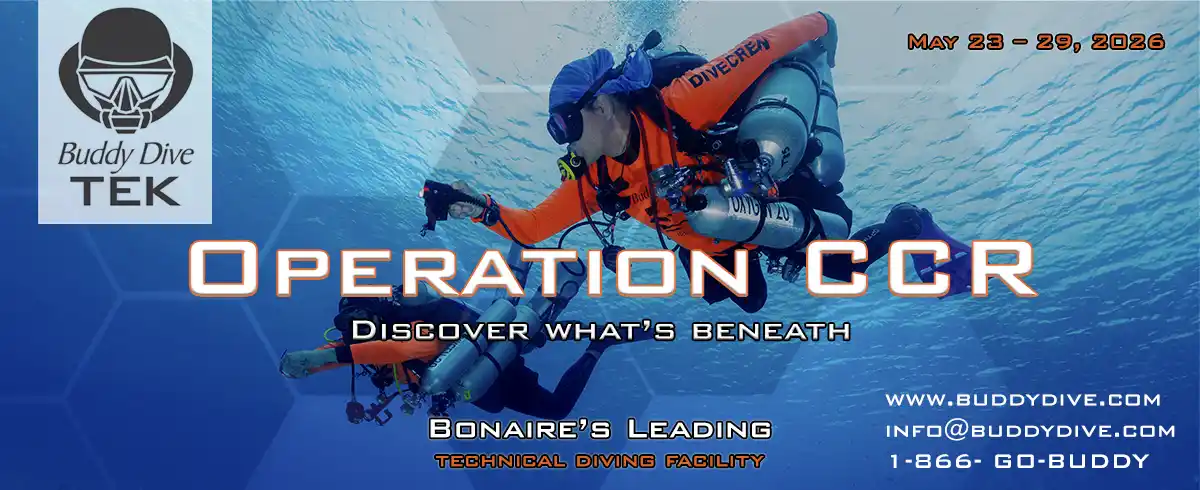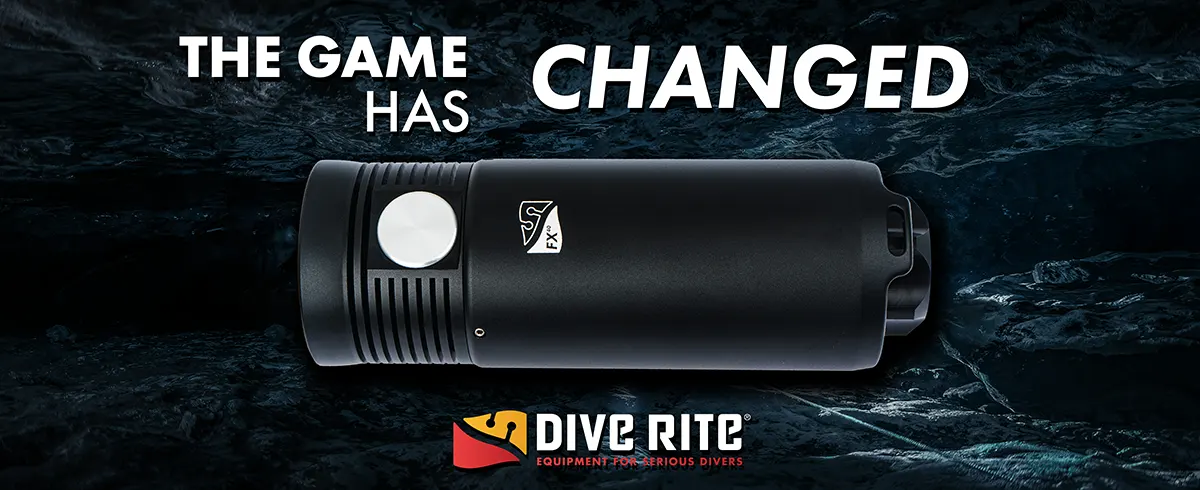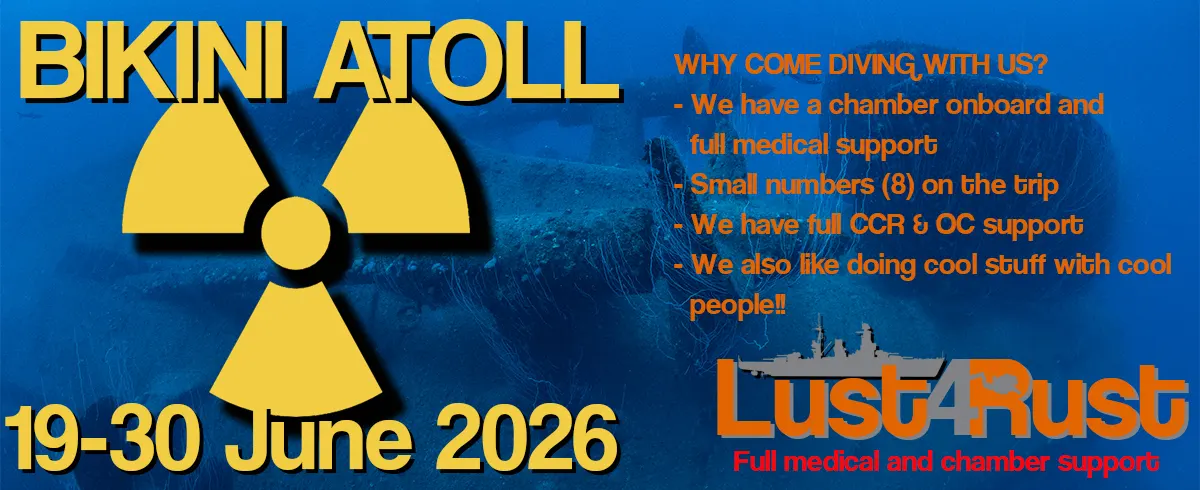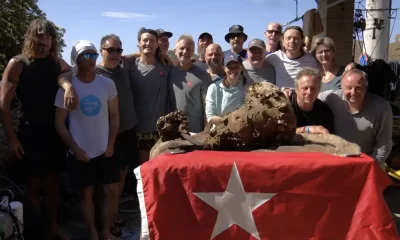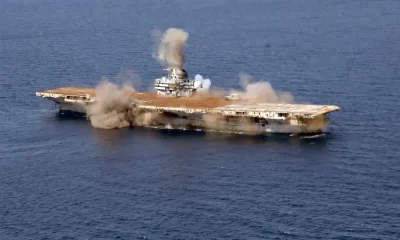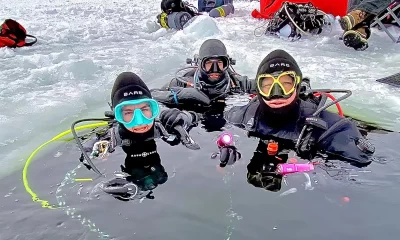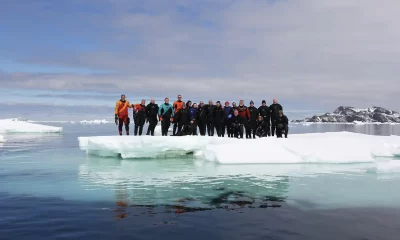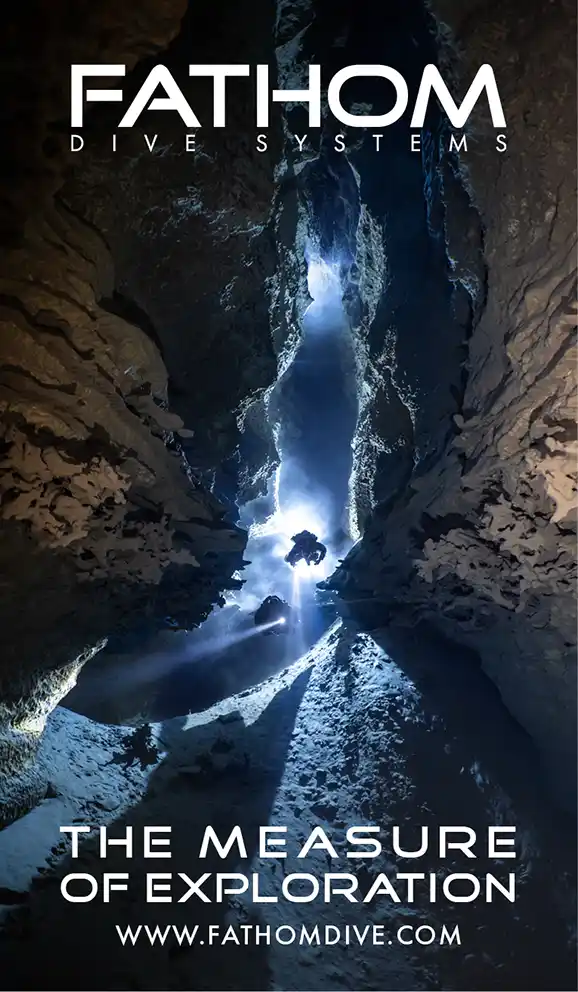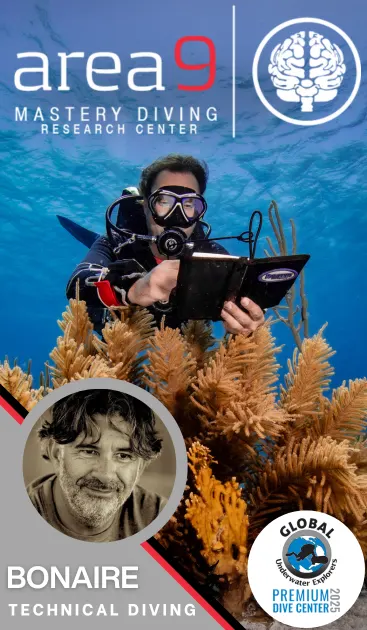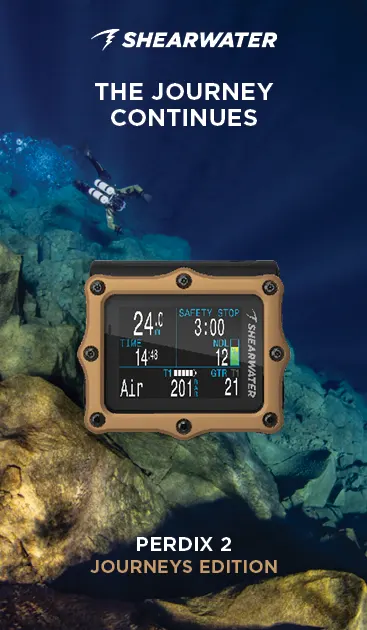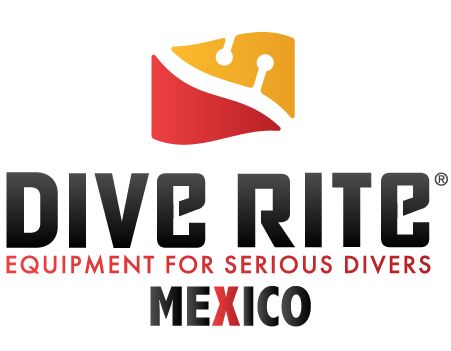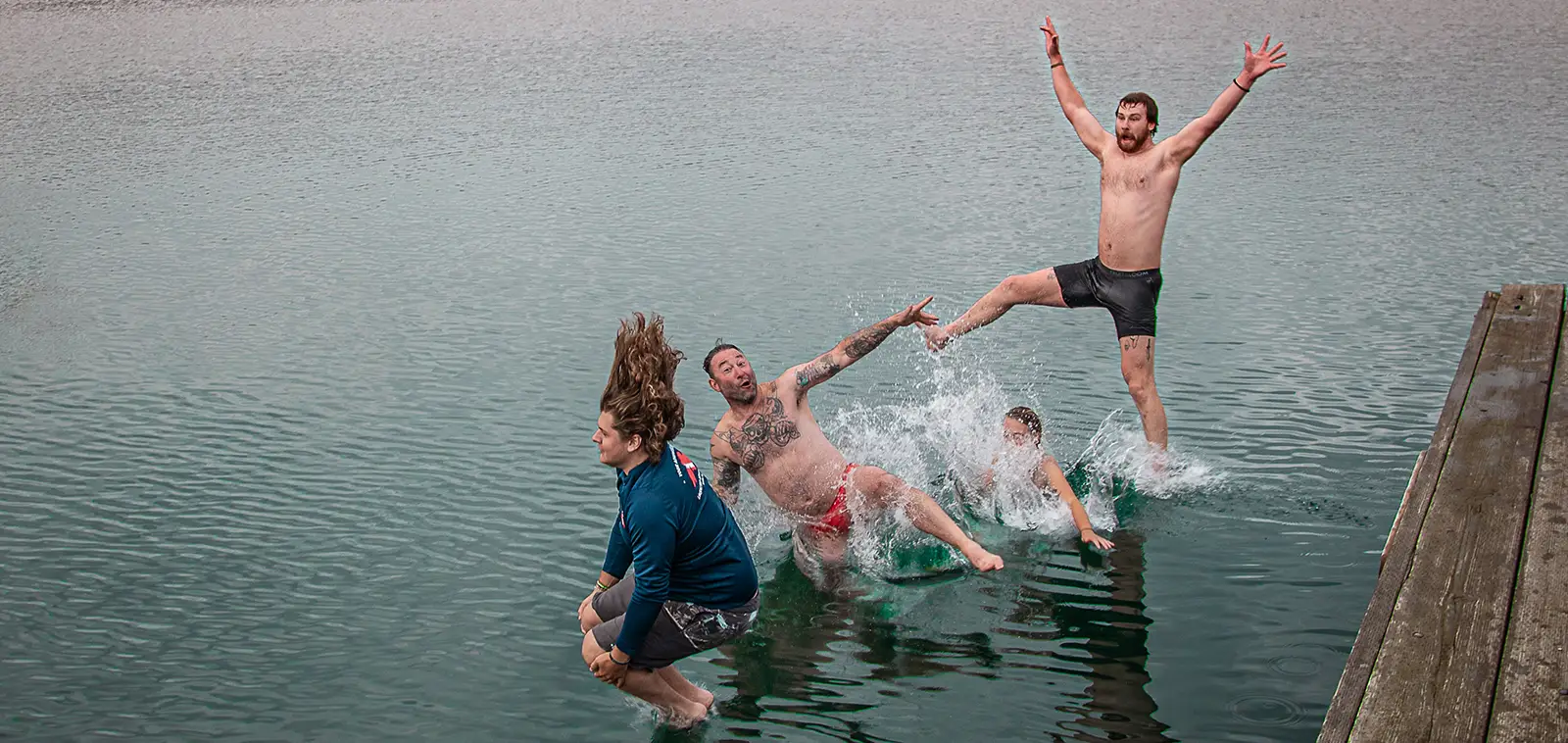
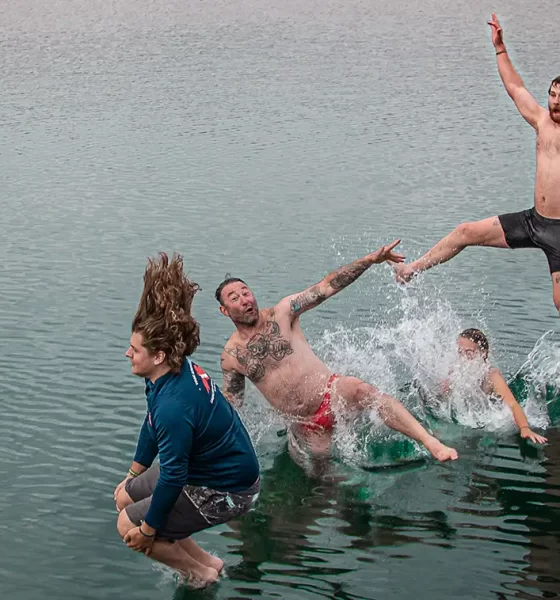
Latest Features
How I Spent My Summer Vacation Royale
“The Great Dive Podcast” hosts James Mott and Brando Schwartz, share their summer vacation adventures diving the amazingly-preserved shipwrecks in Isle Royale National Park in Lake Superior, USA. The prolific podelicious pair make the plunge on six classics; the Cumberland, George M. Cox, Chester A. Congdon, the Monarch, Emperor and the Chisolm, ranging in depth from rec to tech diving depths. A good time was had by all!
By James Mott. Images by Brando Schwartz
8:39 am Ironwood, MI—Halfway home. My diving partner Brando and I just crossed the Wisconsin border into Michigan with only another 600 miles to go before we could make it back to Detroit. Yesterday, we started the journey home from Isle Royale in Lake Superior in Northwestern Michigan. The last day of diving was cut short as we still needed to make a nearly three-hour boat ride back to Grand Portage, Minnesota, and the NOAA weather report predicted winds building upwards of 20 mph, with gusts of 30, and seas building to 10 footers.
It got a bit choppy at times, but we beat the storm, then loaded the trucks, and said our goodbyes to the captain, crew, and dive buddies. The drive up to the boat in Grand Portage from Detroit is the same time and distance as driving from Detroit down to Florida to go cave diving. We were a few miles from the Canadian border in northern Minnesota and needed to drive as far as we could and still get a hotel room and something to eat before everything closed for the night.
Day two of our trip home would send us across Michigan’s Upper Peninsula, over the five-mile-long (8.1 km) mighty Mac Bridge above the Straits of Mackinac, and then due south through the Lower Peninsula—that is, after a quick stop for some smoked whitefish and pasties, of course.
This was my second time to Isle Royale. Last year, we were on a trip that focused on the deeper sites of the Emperor, Congdon stern, Kamloops, and the Chisholm. This year, we tried to round out our experience of the island’s shipwrecks to include some of the other sites as well.

Welcome to Isle Royale
Isle Royale, located in Isle Royale National Park in the northwest Lake Superior, can be enjoyed by divers of all experience levels. Many of the shipwreck accidents occurred with the ships colliding head on with the island while lost in the fog. Some, no doubt, were the result of the chaos of storms, and others happened because someone fell asleep at the wheel. Many of these wrecks range from very shallow 6-9 m/20-30 ft and drop off to depths of 30 m/100 ft or more. One of the most popular dive sites on the island, the America, literally starts at the surface and its intact body drops down to 24 m/80 ft.
Another benefit of adding the shallower dive sites this year was that we could save a huge chunk of money on an otherwise painfully expensive helium bill. Open circuit tech diving is becoming cost prohibitive for fills in that part of the country due to the cost of helium.
Lake Superior doesn’t have zebra mussels like the other Great Lakes. This means the visibility has not been filtered for clearer water, but it also means the natural quality of the ships is so much better preserved there. Although the visibility —nearly 30 m/100 ft—is not as clear it is in Lake Huron and Lake Michigan, on the other hand, you get to see real shipwrecks, grains of wood on cabin walls and railings, actual paint, ceramic, pewter and more, instead of a million zebra mussels in the shape of a shipwreck.
Day one started with a trip over to the island and two dives to introduce the rest of the group to Isle Royale diving. It is cold water—at depth, the water can be in the high 30’s to low 40’s—but we were graced with a nice thermocline in the low to mid 60’s that hit around 9 m/30 ft on most dives.
Captain Ryan Staley of Isle Royale Charters loaded up a crock pot full of meat, vegetables, and spices, then locked it down, and started cooking it for the next 8 hours. We would spend our next five days aboard the Discovery—diving the best shipwrecks in the Great Lake and eating the best meals available among the 450 islands that make up the Isle Royale archipelago.

Urge to Submerge
We started our week underwater on the shipwreck Cumberland, a Canadian paddle wheel steamer built in 1847, the oldest diveable shipwreck on the island. The Cumberland ran aground upon the Rock of Ages Reef, the demise of a few ships on Isle Royale.
Shooting up from the dark and mysterious depths, the reef comes within only a few feet from the surface of the water. It is estimated that if the Cumberland was only 100 feet to the left, she would have been fine. Today however she is torn apart on the bottom after suffering severe weather damage after being stranded on the reef. Today, you can descend to 24 m/80 ft of cold, fresh water and see parts of the paddle wheel and boiler, while most of the wreck lies busted up in 9-18 m/30-60 ft.
The George M. Cox was also taken from service by the Rock of Ages Reef. In 1933, the Cox had been turned into a passenger cruise ship traveling from Chicago up to sites like Mackinac Island and up to Thunder Bay, Ontario. But around 6:30 pm while the orchestra had just started playing, and passengers were beginning their evening meal, she hit the reef while in patchy fog. The bow rose up over 30 m/100 ft into the air above the reef until it broke away and settled to where she sits now.
Today the Cox is busted up on the bottom scattered around 12-18 m/40-60 ft with her stern stretching down to almost 100 feet, rolled mostly upside down. You can still see the intricate woodwork, and white paint can be seen under the stern section on the decking up above you as she lies upside down. Nearby, you can also see her rudder on the bottom.



We made our way to McCargoe Cove for the night. This is a popular site amongst the hikers, with enough dockage for two boats. Although there is room for everyone to sleep aboard the Discovery, some sites like McCargo offer a chance to sleep in a campsite or shelter to better experience the wonders of the island. Tonight however, the island was busy, and so was the cove. We remained tied up to the dock with our bellies full as we enjoyed a sky full of stars and shared diving stories before we headed inside for bed.
Our second day of diving took us out to the Chester A. Congdon. She was a 532-foot-long steel steamer that lost its way in the fog, crashing into what is now known as Congdon Shoal. As she lay resting on the rocks, a salvage crew made their way out but was forced to seek shelter from the 55 mph gales of an angry Lake Superior. By the time they returned, the Congdon had broken in two. Her stern would slide its way down some 67 m/220 ft below into the cold dark waters, while her bow would submerge down the other side of the rocks, spinning and pointing straight up to the surface where she now rests from 34 m/110 ft up to about 12 m/40 ft.
Last year we dived the stern, making our way down a mooring line that tied into the starboard rail at 21 m/70 ft. After hitting the wreck, the rail continues down a seemingly vertical drop to the ship’s wheel in 61 m/200 ft. This year however we wanted to see the bow. Partially salvaged and intact with many places to penetrate and enjoy, it is a confusing and disorienting dive commonly known as the “funhouse.” While descending straight down the mooring line you approach the ship which seems to be lumbering its way directly to the surface at you. While diving on and in this beastly bow, the confusing directions play games with your mind where up is right and forward is down. It is only when you back away and see how mighty the global view of the wreck is that you can take in all its glory.
Just like most of the shipwrecks in Isle Royale, one dive is just not enough. We decided to stay moored to the Congdon bow and do another dive. The sights were just so overwhelming. In a unanimous vote, we all decided to change our itinerary and do another dive on the Congdon bow. Although it is very small in comparison to the stern section, it still has so many places to go and, unfortunately, just not enough time to see and experience it all.
We docked at Tobin for the night, just over the hill from the bustling metropolis of Rock Harbor. One of the civilized towns on Isle Royle, full of the rush hour traffic of foxes, moose, and tired hungry hikers with their first chance in days for a hot meal, cold beer, and porcelain toilet, Tobin doesn’t have the luxury amenities of Rock Harbor, but it does have a quieter and more picturesque scene with hikers awaiting seaplanes. Unlike the hiking tourists of Isle Royale who were eating freeze dried fruit and trail mix, we were sitting down to our second dinner of pork chops and would wake the harbor up with the sizzling aromas of bacon and pancakes for breakfast. Our boat Discovery was in danger of being pirated by ravenous backpackers.


More Shipwrecks
In December of 1906, the Monarch had been making her last trip of the season. She left Thunder Bay Ontario headed for Sarnia. The Monarch was the pride of the Northern Navigation Company out of Sarnia, Ontario Canada, she ran head on into the rocks at Palisades. Lost in a whiteout blizzard, the wall of rock came out of nowhere as they were slightly off course in the snow, fog, and ice. Palisades Rock is where we would start our third day of diving.
Our dive started from a mooring block in 21 m/70 ft of water. The Monarch is a maze of busted-up wreckage, some vast enough to swim through and under. It is littered with artifacts that are interesting to see and photograph. Pewter jugs, glass beer bottles, wrenches, and machinery. It is a fun playground of a dive site that divers of all certification levels can enjoy.
Our second dive was on the bow of the Emperor. Just as massive as she sounds, the Emperor is a shallow recreational dive, and it is also a deep technical dive. All in one. The bow is only 9 m/30 ft from the surface, but her stern drops away to 52 m/170 ft of dark water.
While we filled tanks for tomorrow’s deep dive with a light trimix, we passengers aboard the Discovery enjoyed a Lake Superior swim and cannonballs from the highest elevation of our vessel. We motored our way back to Birch Island for some land-based dinner at a picnic table and maybe set up some tents and hammocks to sleep under the stars, but drat!! The island was already occupied. Back to Tobin we would go. Dinner would be ribeye steaks. Oh, how those hikers must have hated us. Even our token vegetarian was graced with alternative meals every day that still sent his taste buds into narcosis.
Last year we started the week on the deep side of the Emperor. It was supposed to be one warm-up dive for the other Isle Royale veterans, but Brando and I begged for another day on it. There was just so much to digest on this deep dive.
The deep mooring takes you down to about 30 m/100 feet, the stern section drops off with multiple possible tours of crew cabins or engine room, dropping to nearly 45 m/150 feet, porcelain sinks, light bulbs, doors, crew bunks and bedding—so many sights to amaze your mind and senses. The blades of the propeller crashed so hard into the rocks that they no longer exist. Only a nub, but if you’re into seeing nubs, there is a beauty at 52 m/170 ft.


The rest of the Emperor rises all the way up to 9 m/30 ft of water, as you swim up her 152 m/500 plus feet of length. The bow, with beautiful anchors, a penetrable chain locker for the more experienced diver, and a mess of wreckage, ripped and ragged, torn into pieces from her collision that make one-quarter- inch steel look like aluminum foil thrown away after a family BBQ.
The Emperor crashed into a shoal near Canoe Rocks. The days of compass navigation on the Great Lakes, and an overworked crew dozing off at the wheel, may have led to a miscalculation on when to change course. That decision would eventually crash the 160 m/525 ft of the mighty Emperor into the rocks.
The light trimix and oxygen decompression gas allowed us to drop onto the Emperor stern and enjoy the depths and beautifully preserved stern section of the wreck. After it was clear that we had all made our way towards the bow section, Captain Ryan moved the Discovery to the bow mooring and waited for us. The trip forward seems like an endless journey of cargo holds. Dropping in, swimming through, coming out for hundreds of feet of intact ship with 30-40 feet of relief up from the bottom.
At roughly 100 feet, the Emperor holds a tiny secret that the daring diver can experience. It is the deep spot and turn around for the recreational divers, and it is a quick stop along the way to starting decompression for the technical divers leaving the stern.
When the Emperor crashed into the rocks, the slope of the bottom doesn’t match the wreckage, and there is a section where you can swim under the wreck, for about 50 feet. Sometimes if the sun is right you can see across it; other times it can be a torturous cave of questions and conflicting emotion. Or as Captain Ryan says, “the longest 50-foot swim of your life.”

Our Last Night
The last night aboard the Discovery is Italian night. Captain sets a cinematic scene with mountains of spaghetti, garlic bread, salad, a bottle of wine, and Dean Martin playing in the background. Docked at Windigo, we enjoyed our last dinner on Isle Royale and awaited our last dive the next morning on the Chisholm engine.
The Chisholm is another ship that wrecked on the Rock of Ages shoal. Part of it lies on top of the Cumberland, and both rest very near to the Cox. The famous Chisholm engine, however, sits at the base of the rocky wall in about 46 m/150 fet of water. This monstrous double compound steam engine rises from the bottom to 34 m/110 ft. The engine features two cylinders, one with a 30-inch diameter and the other 56-inch, and a stroke of 48 inches. It is a wondrous sight for divers to experience, both for recreational divers in the shallow water and for technical divers to descend to the bottom and take all of it in, along with the prop in the deepest depths.
Our dive last year gave us some magical pictures of the beastly Chisholm engine. However, this trip was going to get cut short. News had come in during our Italian dinner that a storm was pushing down across Lake Superior, and we needed to get back early and beat the storm.
We left the dock at Windigo early the next morning. The three-hour ride took a little longer as we fought some rough, choppy water. As we approached the shores of Minnesota, the sun was shining, and the skies were still blue. Luckily, we were well ahead of what was on its way.
We once again docked safely at Grand Portage, MN. Unloaded the boat Discovery and prepared for our two-day journey back to Detroit.

Isle Royale is the quintessential trip of a lifetime. Backpackers, hikers, and divers will all agree. It is the least visited National Park in the United States of America, but the most returned-to park. For divers, the wrecks are clean and pristine. You could spend a whole five-day trip on any one of the Isle Royale wrecks.
The dive trip aboard the Discovery is a great experience, and the trip to get up to do the trip is an adventure. It is part of the experience that makes Isle Royale so memorable. Yes, it is difficult to get to, the water is cold, the diving is more advanced than warm water wrecks, you’re not in a 5 star resort. All true. But Isle Royale will be in your top diving memories forever.
DIVE DEEPER
InDEPTH: THE TALKS: Leaders of the Pod By Stratis Kas
InDEPTH: Podcasts, Webbies, and YouTubes … OH MY! By Christine Tamburri

James Mott was an early adopter of the DIR philosophy, completing Fundamentals, Rec Triox, and Cave 1 with GUE in the early 2000’s. Today he is an instructor trainer for UTD Scuba Diving, a PADI instructor since 1998, and holds additional certifications from nearly every agency in scuba. A veteran of the Great Lakes area diving community, he started working at Don’s Dive Shop in 1991 and later co-founded Sea The World Scuba Center in 1996. Although he has an honest interest in all things underwater, big or small, James’ heart lies beneath the cold waters of the Great Lakes along with the shipwrecks that he loves diving. Passionate about educating the diving community and sharing an underwater philosophical base, James’s instruction provides infinite possibilities and extends attainable excellence to all divers willing to reexamine their underwater behavior.

